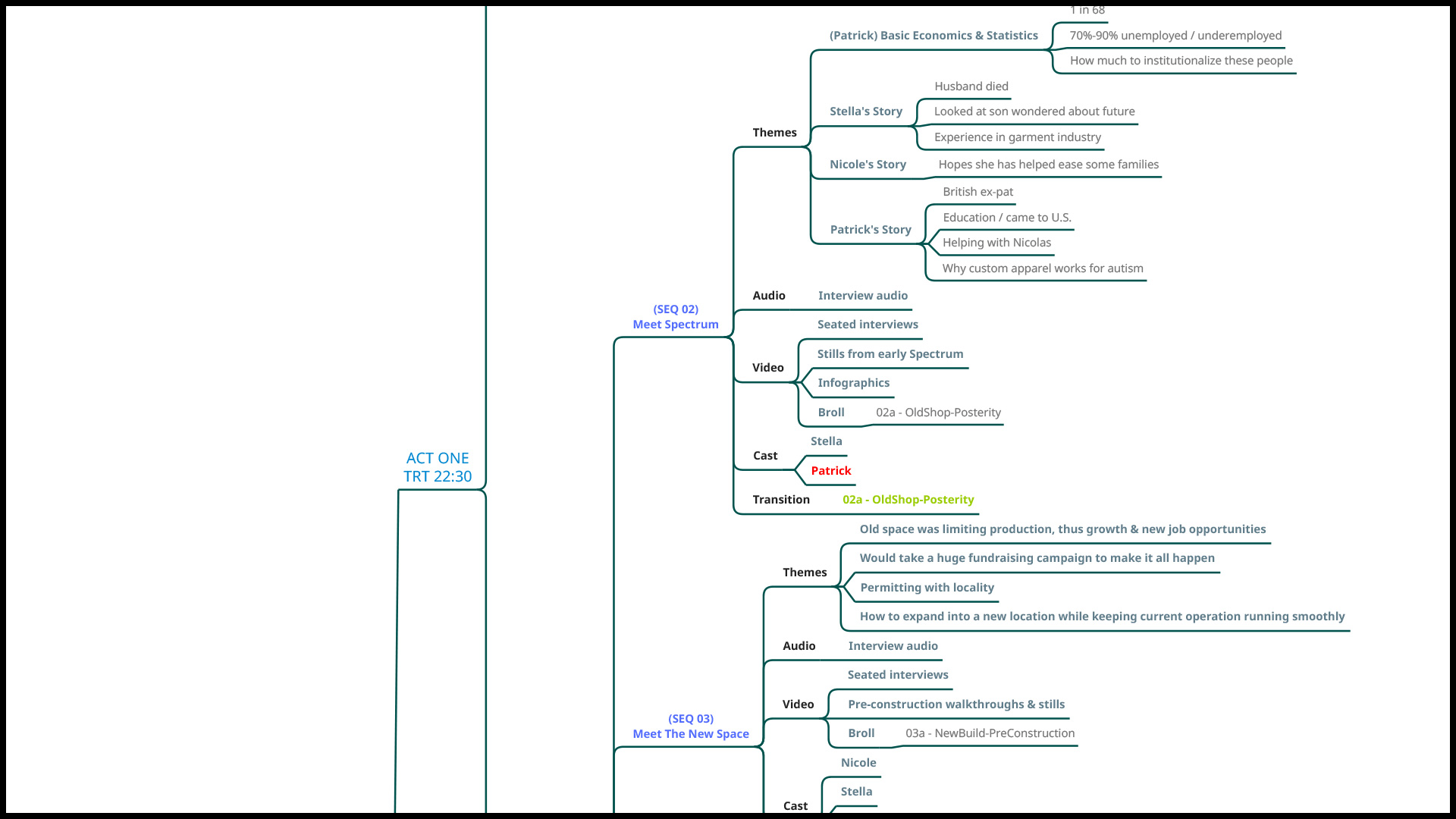I recently had the opportunity to visit a client HQ to work with their marketing executives on storyboarding a few corporate video projects. During that ideation session, we discussed the various elements that (often) define a narrative arc: introduction, conflict, rising action, twist, climax, falling action and resolution. As we explored these various elements, I mentioned that during the production of my documentary film, “This Business of Autism,” I relied heavily on an online mind map solution to help me architect the storylines, themes and production elements. At the outset of that project (having never produced a feature-length film before) there were so many creative concepts flowing I felt like a child blowing and chasing bubbles in the backyard, and being able to leverage a flexible visualization tool was critical for wrangling and structuring ideas as they flowed from our research, our advisors and the film’s characters.
DOWNLOAD THE COMPLETE MIND MAP PDF HERE
Why a mind map?
Whether you’re creating a short story, a novel, a screenplay, a documentary, a corporate video or even an experiential event attendee flow, you’ll want to be keenly aware of the underlying structure of your story. Not only will this help you define the spine of your story, but it can also help bring to light various sub-themes, character arcs, chronological inconsistencies and production efficiencies.
In the case of “This Business of Autism”, I chose to follow a time-tested three-act structure, where about 25 percent of the total run time (TRT) would be dedicated to act one, 50 percent to act two, and the remaining 25 percent to act three. Within act one I chose to place the Introduction and Conflict sections, within act two I placed the Rising Action, Twist and Climax sections, and act three held the Falling Action and Resolution sections. Each section was then supported through one or more sequences, and each sequence was outlined with its themes, cast, audio and video elements, and outgoing transition.
What can not be illustrated in the static image below is the number of iterations that evolved into the final mind map seen here. It would not be an overstatement to say that dozens upon dozens of iterations were created, reworked and then scrapped as the story came to light. This version of the mind map was saved near the end of production, and you can see the elements in red that were yet to be filmed.
Being able to quickly grab an entire sequence and drag it into a new act proved critical for clarifying the storyline as well as ensuring chronological consistency and character introductions. For example, there were numerous times when a cast member would mention an activity or person and how they related to the story, however that element had not been introduced yet in the film. I was quickly able to refer back to the mind map to inform upcoming b-roll shoots and ensure I didn’t have any “dangling threads” in the narrative. I would suggest that whatever tool you choose, you would do well to select one that “auto rejoins” the node structure without a lot of tinkering. When you’re in rapid-fire creative mode you don’t want to waste a lot of time tinkering with software idiosyncrasies.
Mind maps also provided critical guidance while I was writing my interview questions, conducting interviews and filming b-roll. By being able to quickly refer back to the mind map during an interview, I was able to ensure I was threading together my thematic elements from character to character, sequence to sequence, and act to act. There are a number of instances where I was interviewing a cast member, and a quick glance at the mind map before wrapping reminded me to ask a particular question in response to something unexpected they provided, which would later give me a critical sound bite I needed in editing to weave together various narratives. So often I find that the most unexpected, wonderful moments can occur during interviews (regardless of whether I’m filming a documentary cast member or a corporate executive) that being able to reference a structured visualization gives me the ability to instantly find those magical creative opportunities, connect disparate dots and deliver impactful multithreaded storylines.




